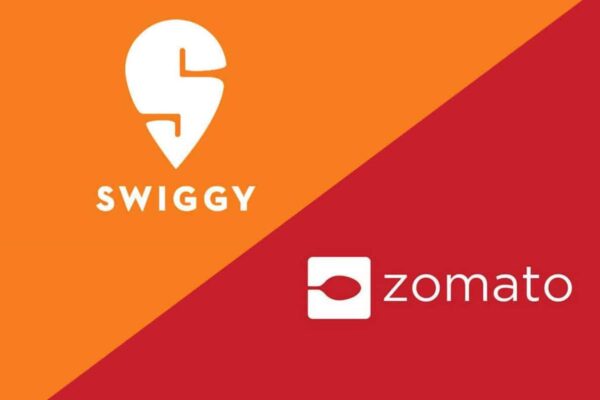Exploring Swiggy’s Potentials: Is Pre-IPO Valuation Surge A Sign Of Future Success?

Just a week ago, regulatory filings with the US SEC show that a fund managed by US-based asset manager Baron Capital increased the valuation of food and grocery delivery platform Swiggy to $15.1 billion, a 25% increase from the last fair valuation.
Swiggy was valued at USD10.7 billion in its past round in 2022, and individual investors have subsequently adjusted the data upwards or downwards. However, following repeated markdowns, Swiggy’s valuation has risen in recent months.
- US-based asset management Baron Capital Group raised the food-delivery platform’s fair value to USD12.1 billion as of December 2023 and now to $15.1 billion.
- In April, Invesco Inc. increased the valuation of its Swiggy stake for at least the third time to about $12.7 billion, which is a jump of 19%.
These markups gained traction as the food delivery firm apparently filed for an IPO with SEBI. Whether it is an improved stock market attitude towards consumer technology businesses or a need for shareholders to realise some value, the food-delivery platform is considering going public for one of two reasons, and the company need to justify these hiked valuations if it wants its IPO to be a successful card.
Swiggy, a Bengaluru-based delivery and quick commerce behemoth, filed draft documents to SEBI on April 30 for confidential filing. While we don’t know the specifics of the IPO, food delivery startup intends to raise around $1.25 billion with a fresh offering of $450 million and an offer for sale component for $800 million. Also included is $90 million in pre-IPO placement. According to reports and sources, Swiggy’s biggest investors, including Prosus (which owns about 32% of the company) and Softbank (8%), want cashouts as part of the process.
So, let’s take a short look at Swiggy’s success over the last year and the growth it expects over the next several years.
Is Swiggy’s food delivery business profitable?
Swiggy said last year that its food delivery service was profitable as of March 2023. However, according to a recent investor note, it reported EBITDA losses of INR88 crore in the first nine months of FY24. This, however, represented a noteworthy improvement from the INR1,008 crore EBITDA losses in FY23. According to reports, the company ended the fiscal year with a very tiny negative EBITDA margin in the food-delivery sector.
According to people familiar with internal predictions, the company expects the business to be profitable in the future. Swiggy’s management has told investors and investment bankers that it expects profitability and substantial topline growth over the next two years.
According to sources, Swiggy is estimated to have closed FY24 with a topline of approx INR6,000 crore in its food delivery segment. As per the recent investor note, the food-delivery division generated revenues of INR4,526 crore in the first three quarters of the fiscal year. According to folks familiar with the company’s internal predictions, the vertical would increase at a rate of 20% to 25% each year between fiscal years 24 and 26.
So, even if the food delivery segment of Swiggy is doing well, one cannot ignore the presence of competitors.

Swiggy v/s Zomato- How does Swiggy compare to Zomato in food delivery?
Despite Swiggy exceeding Zomato in revenue till FY23, Zomato has always been at the forefront, from building the food delivery market to becoming public. Swiggy has lost a great chunk of market share to Zomato in food delivery in recent years despite being the first to enter the industry when it began in 2014. Deepinder Goyal launched Zomato in 2008. It included information about restaurants, rates, and menus at the time. However, it began food delivery operations in 2015 after watching Swiggy’s great success. However, Zomato has subsequently established a large lead.
Swiggy has no alternative except to directly compare Zomato’s bottom line and size to explain its pricing. Furthermore, it falls short on several fronts compared to Zomato, which had a 67% increase in revenue in FY 24.
According to Bernstein, Zomato outperforms Swiggy due to strong execution, broader penetration (750+ cities vs. ~600 for Swiggy), and a stronger content funnel. Zomato has grown in both tier II+ and tier I cities, resulting in a greater MAU base. Industry members and restaurant executives who worked with both companies report that Zomato has been more actively engaged and hands-on with them in recent years than Swiggy. According to several industry observers, Zomato has become more adept at adjusting revenue levers like ad income and loyalty fees.
While we do not know the loss for FY24, Swiggy trimmed its net loss to roughly $207 million (INR 1,730 crore) in the first nine months of the fiscal year. Sources would not say if Swiggy will turn a profit in FY24 after reporting a net loss of INR 4,179.3 crore in FY23.
Now, the competition revolves around the quick commerce segment.
According to Abhishek Ginodia, cofounder of pre-IPO platform Altius Investech, Swiggy’s primary distinction is its quick commerce. Swiggy and Zomato have comparable revenue rates, but Zomato has outperformed. Zomato increased its performance by minimising losses from Blinkit; however, Swiggy’s quick commerce unit, Instamart, reduced its contribution margin by 50%. As a result, Swiggy’s IPO may be valued lower than Zomato’s.

While Swiggy’s food delivery services have been profitable, the quick commerce sector, Instamart, has suffered considerable losses despite rising revenue. Instamart, accounting for around 17% of Swiggy’s overall revenue, has been losing money over the last year as it battles extensive competition in the quick-commerce industry. It had a topline of slightly less than INR1,000 crore in the first nine months of FY24, but its EBITDA burn was more than INR1,000 crore over the same period. The contribution margin stood at -7.6%.
How would the market react to Swiggy, considering that a large firm, Zomato, already trades on the exchanges?
Drawing parallels with Zomato, Umesh Chandra Paliwal, cofounder of UnlistedZone, stated that the present atmosphere is favourable for firms seeking to garner cash through IPOs. The success of Zomato, which has provided decent returns and just attained profitability, provides a positive example for Swiggy. If Swiggy seeks to imitate Zomato’s success, its performance in the unlisted market will work as a clear standard. So, how do grey market traders see Swiggy?
Swiggy stock is presently only offered in tranches. According to grey market pundits, due to the low quantity, stocks are not even trading on multiple platforms. According to Paliwal of UnlistedZone, Swiggy’s stock is traded sparsely on the unlisted market; therefore, traction is insufficient to judge prospective IPO sentiment.
According to Abhishek Ginodia, Swiggy shares have been trading between INR 320 and INR 350 since their entry in the unlisted market, valuing the company at $9 billion to $9.5 billion. Trades are also constrained since cheque sizes have been limited to INR 5 crore and higher.
Based on the facts provided, Paliwal values Swiggy’s IPO at roughly $10 billion. Ginodia, on the other hand, predicts the IPO valuation to be between $11 billion and $12 billion, which is 30-40% lower than Zomato’s present market capitalization.
Much of the shift has coincided with Zomato’s public-market success, as the Gurugram-based company saw its market capitalisation rise to USD13 billion on its stock exchange debut in 2021 (up from its IPO price estimation of USD8 billion). After a roller-coaster ride over the last three years, the valuation now stands at a whopping USD20 billion. According to an investor note, Swiggy’s valuation may be 20% to 25% lower than Zomato’s. Let’s see if markets agree!
Will Confidential Draft Papers Move Investors?
Swiggy has opted the confidential route for its IPO. Will this lead to misunderstanding among investors? A managing partner of an audit company noted that Swiggy’s draft red herring prospectus (DRHP) will not be available for public review immediately. Swiggy can maintain control over the flow of information for a bit longer. However, the papers will still be sent to institutional investors so that they will not influence the entire IPO. The confidential filing method allows the firm to maintain control of the narrative for a longer period of time, which is advantageous during the pre-IPO stage.
Does the absence of a public DRHP raise concerns about transparency among potential retail investors?
Paliwal says that filing confidential draft papers is unlikely to have a detrimental impact on investor trust. There are three types of IPO investors: QIB, HNI, and Retail. QIBs often have access to thorough company and financial information, whereas HNI and retail investors rely heavily on the grey market premium (GMP). As a result, the impact on investor confidence is unlikely to be negative.
The formation of a new government brings new policies. So, is this the correct time for Swiggy to launch its IPO?
Market critics and experts say that the timing for Swiggy’s IPO couldn’t be better, especially because Zomato has been trading at an all-time high for many weeks. However, there has been some deterioration in the company in the previous month or two, with Zomato’s share price dropping by about 12%. This suggests that Zomato is not yet a steady stock and may be more susceptible to market volatility.
The IPO market is thriving, and Zomato’s impressive performance over the last year has resulted in considerable profits for investors. Swiggy’s lower valuation than Zomato may entice investors looking for bargain possibilities. They may sell Zomato shares to purchase Swiggy shares, expecting comparable or higher profits.
Some claim that the IPO momentum is robust, which is a positive aspect for new IPOs, while Ginodia feels Swiggy faces issues in its core business, particularly as the focus shifts to quick commerce, where it has lost its position. Beyond the immediate concerns, wider industry trends and variations in consumer behaviour are critical. Swiggy’s expanding embrace of food delivery online and quick commerce presents considerable development potential, even as competition in the latter has increased with the advent of Zepto and the impending arrival of Reliance Jio and Flipkart.
Swiggy will need to focus on strategic alliances and lowering per-order costs while also looking for ways to enhance its customer experience, which has trailed behind the competition.

Ultimately, the Swiggy IPO’s success will be determined by the company’s ability to properly communicate its growth plan and financial roadmap to investors, and demonstrate that it, like Zomato, has a clear route to profitability. After a decade of duopoly and striving to outperform its archrival, Swiggy is recognising that its fortunes are more intimately tied to Zomato than it may want to believe. Maybe that’s how industries function!
So, the ultimate question asked in the title is: Will the valuation hike be a sign of the success of the IPO?
Swiggy’s valuation soaring before its IPO could indeed be seen as a positive sign for its upcoming IPO. A high valuation indicates strong investor interest and confidence in the company’s business model, growth potential, and future prospects. It suggests that investors believe in Swiggy’s ability to generate profits and sustain growth in the long term.
However, while a high valuation can be a good indicator, it doesn’t guarantee the success of the IPO. The success of an IPO depends on a myriad of factors, including market conditions, investor sentiment, industry trends, and the company’s performance post-listing, as discussed above. Swiggy will need to demonstrate continued growth, profitability, and effective execution of its business strategy to maintain investor confidence after the IPO.
Overall, a soaring valuation before the IPO is a positive signal, but it’s just one piece of the puzzle in determining the success of Swiggy’s IPO. Investors will closely watch how the company performs in the public markets to assess its long-term viability and potential for delivering returns.




